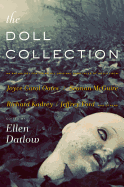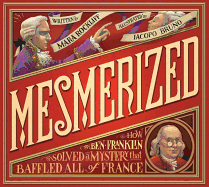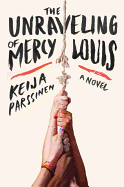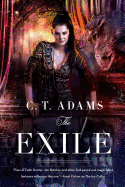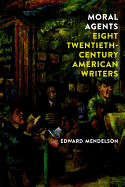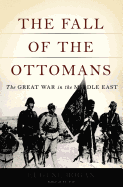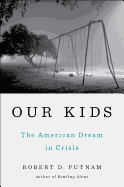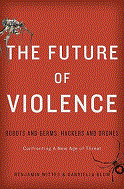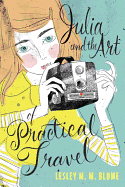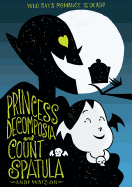Friday, March 20, 2015
Years ago, when I was in college, I worked at University Book Store in Seattle (little knowing that bookselling would become a career). My respected mentor was a woman named Marcie Kembel--often a strict taskmaster, but warm and funny. One day, I was shelving Ross Macdonald's final Lew Archer book, The Blue Hammer, and mentioned to Marcie that it was the New York Times Book Review cover piece, dismissively wondering why the vaunted Times would allot so much space to a mystery. Marcie called me on my snobbery, and challenged me to read it and report back to her. I did, and I was awestruck. This was what I had been missing by not reading mysteries?! Hammett and Chandler and Doyle followed; I was hooked for life. (I was also more wary of making judgments, at least literary ones.)
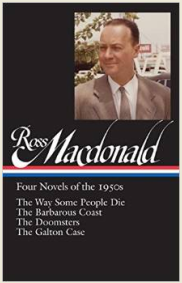 Now I can revisit one of the finest hard-boiled mystery authors with the Library of America's publication of Ross Macdonald: Four Novels of the 1950s, containing The Way Some People Die, The Barbarous Coast, The Doomsters and The Galton Case. Robert B. Parker wrote that Macdonald, "in his craft and integrity, made the detective form a vehicle for high seriousness." Macdonald also inspired later writers with his exploration of what lies beneath the façade of respectability, how family secrets fester, how the past is never truly buried, with postwar Southern California as his dark canvas.
Now I can revisit one of the finest hard-boiled mystery authors with the Library of America's publication of Ross Macdonald: Four Novels of the 1950s, containing The Way Some People Die, The Barbarous Coast, The Doomsters and The Galton Case. Robert B. Parker wrote that Macdonald, "in his craft and integrity, made the detective form a vehicle for high seriousness." Macdonald also inspired later writers with his exploration of what lies beneath the façade of respectability, how family secrets fester, how the past is never truly buried, with postwar Southern California as his dark canvas.
Macdonald's prose has echoes of Hammett and Chandler, just as later writers' works echo his own:
"A bowl full of floating begonias sat on the desk in front of [the receptionist]. Audubon prints picked up the colors and tossed them discreetly around the oak walls.... A Harvard chair stood casually in the corner. I sat down on it, in the interests of self-improvement, and picked up a fresh copy of the Wall Street Journal."
But for me and other fans, Macdonald is sui generis, and I hope the Library of America plans further volumes. --Marilyn Dahl, editor, Shelf Awareness for Readers
Hausfrau
by Jill Alexander Essbaum
If, as attributed to Socrates, "the unexamined life is not worth living," then the life of Anna Benz should be rich and fulfilling. The introspective protagonist of Jill Alexander Essbaum's first novel, Hausfrau, Anna spends nearly all her days and nights reflecting on her life--her often distant banker husband, Bruno, and his family, her three children, her expatriate Zürich surroundings, her German-language classes, her Jungian psychoanalysis and her lovers. Consumed by a listless sadness, she fills sleepless nights wandering the hills behind her suburban house and empty days riding the trains and walking the streets of the city. With Bruno's encouragement, she had enrolled at a local language school and begun psychotherapy in an effort to become more engaged in her Swiss life and meet new people. And so she does. After a brief, passionate love affair with a visiting Boston scientist, she indulges in more sexually intense and transitory liaisons. She finds adultery "alarmingly easy" and tells herself that it satisfies and suits her: "Surrender is your strong suit. Assent, your forte." From a "good wife, mostly," Anna becomes an active adulterer: "Some women collected spoons. Anna collected lovers."
In Anna Benz, Essbaum has created a genuine, complex woman whose journey--no matter how dark it may be--reveals truths as only great literature can. She may have her roots in Tolstoy's Anna Karenina or Flaubert's Emma Bovary or Ibsen's Hedda Gabler, but she is a thoroughly modern and distinct character. Hausfrau is not just an exceptional first novel, it is an extraordinary novel--period. --Bruce Jacobs, founding partner, Watermark Books & Cafe, Wichita, Kan.
Discover: This terrific first novel is a marvel of precise construction, complex character and dramatic intensity.
The Doll Collection
by Ellen Datlow, editor
Haunted dolls and sadistic puppets may sound like the stuff of bargain basement horror films, but in the hands of the talented writers edited by Ellen Datlow (Best Horror of the Year), they become delectably creepy fodder for nightmares.
Although Datlow outlawed the cliché of the outright evil doll for The Doll Collection, the writers mine the strangeness of dolls and the twisted natures of a few human characters to chilling effect. In "Heroes and Villains" by Stephen Gallagher (The Bedlam Detective), a dead ventriloquist's dummy gets a new voice to tell its secrets. Gemma Files's (A Book of Tongues) "Gaze" centers on a miniature portrait of an eye that brings a malevolent presence into the life of an antiques dealer. The titular doll in "Miss Sibyl-Cassandra" by Lucy Sussex (Thief of Lives) gives out gypsy-blessed fortunes that come true in surprising ways for their recipients.
From poppets that prolong human lives to simulacra that steal them, readers will find variety here, not only in the types of spine-tinglers but in the styles of the writers as well. The richly diverse tales are accented with photos by Datlow and others of particularly odd or grotesque dolls, each chosen to reflect its accompanying piece. Datlow's introduction, though brief, demonstrates a deep reflection on the subject that deserves as much attention as the stories. As always, her focus on the psychology and folklore behind the central topic of the anthology demonstrate why Datlow's name appears on so many high-quality volumes of speculative fiction. --Jaclyn Fulwood, blogger at Infinite Reads
Discover: Tales of haunted or otherwise unsettling dolls from popular writers including Joyce Carol Oates and Carrie Vaughn, edited by speculative fiction master Ellen Datlow.
The Unraveling of Mercy Louis
by Keija Parssinen
Keija Parssinen's (The Ruins of Us) The Unraveling of Mercy Louis depicts a young woman's coming-of-age in small town peopled by complex, conflicted, ultimately sympathetic characters.
Port Sabine is a refinery town on the Texas Gulf Coast, depressed and parochial, built around oil, secrets and religion. Mercy Louis lives with her grandmother Maw Maw, a radical evangelical who prophesies the end of the world will come in Mercy's senior year. A basketball prodigy, Mercy needs this senior year to show the scouts that she's worth the investment, so she can go to college if Maw Maw is wrong. A discovery in a dumpster throws the town into upheaval and witch-hunting, even as Mercy begins to explore the secrets of her own past as well as the possibilities of her future.
The cast of characters includes Mercy's best friend, Annie, riotously rebellious and rich; Mercy's mother, absent until a mysterious letter arrives; and Illa, the manager of the basketball team and a hopeful sports photographer with troubles of her own, fixated upon Mercy in her camera's lens. A new boy in Mercy's life--the first--threatens to upturn her delicate balance: obedience to Maw Maw and the church, and the poetry she makes on the basketball court.
Although this is clearly Mercy's story, many of these characters captivate and capture the imagination; Parssinen's gift is in rendering the essences of both people and place. The Unraveling is suspenseful and disturbing, compassionate and tender, a thought-provoking experience for anyone who's ever been young and wondered about the past, and the future. --Julia Jenkins, librarian and blogger at pagesofjulia
Discover: A lovely, thoughtful, disquieting story of the effects of small-town pressures on a remarkable young woman.
Cat Out of Hell
by Lynne Truss
Roger--a sarcastic, well-read, talking cat who solves cryptic crosswords--is the star of Cat Out of Hell, an adventurous, gothic mystery novel that straddles a fine line between humor and horror, good and evil, life and death. Roger's story is complicated and at times absurdly comical and far-reaching. Readers, however, are in good hands with Lynne Truss (Eats, Shoots & Leaves), who launches her narrative with Alec Charlesworth--a lonely widower, a former Cambridge librarian--who retreats to a North Norfolk coastal cottage to grieve the death of his beloved wife. As dreary days wear on, Alec opens an e-mail sent to him by a former colleague he scarcely remembers, Dr. Winterton. Attached is a mysterious document called "Roger," a compilation of notes, screenplay pages, JPEGs, videos, audios and file transcripts.
Alec tries to decipher why these materials were sent to him and their meaning. He focuses on a recorded conversation between Roger and a man named Wiggy. Alec learns that Wiggy is also a grieving widower, whose sister and her dog have disappeared. Wading through the files and putting all the pieces together, Alec begins to suspect the chilling story of Roger may link several mysterious deaths. Furthermore, it may even expose a complex plot involving the dark side of cats, their many lives and their intricate--sometimes retributive--behaviors.
Rich characterizations and the inventive structure of Truss's clever, comic novel all serve to enhance this endearing, insightful and often wicked mystery that ratchets up suspense and intrigue while exploring aspects of mortality. --Kathleen Gerard, blogger at Reading Between the Lines
Discover: An intelligent, talking cat--with a dark, chilling past--may be a link to several mysterious deaths.
Science Fiction & Fantasy
The Exile
by C.T. Adams
Brianna Hai isn't quite human, but as the owner of an occult shop, her job manages to hide a few of her stranger aspects--not that she has to do much hiding from the tourists who buy the shop's ineffective baubles. Her real concern is for those like her, the Fae, who know she's an exiled royal from Faerie, though the enchanted protections she sets around her shop usually keep the otherworldly visitors in line.
She doesn't know that Nick Antonelli, a police officer whose brother works in Brianna's shop, has been asked by federal agents to keep an eye on her. After Nick witnesses a magical invasion of the shop, Brianna realizes she's not as safe as she thought. More than that, the attack reveals that her father, the High King of Faerie, is in danger. Brianna returns to the deadly faerie courts in order to help him. Unfortunately, the two brothers insist on joining her. Unable to fend for themselves in Faerie, the brothers require her protection and put her in greater danger.
While readers of other literature involving the faerie realm will find the courts and culture in The Exile familiar, C.T. Adams's approach to the land and its occupants is new and refreshing, making this version of Faerie very much her own. In this story, human culture has encroached on this magical land, influencing its architecture and protocols, and is a cause of great tension within the Faerie courts. The Exile is a suspenseful, fun, urban fantasy rich with visceral detail, from the human-influenced structure of the Faerie buildings to the reality-defying beauty of the Fae creatures that inhabit the magical world. --Justus Joseph, bookseller at Elliott Bay Book Company
Discover: An exciting urban fantasy that takes readers from city grind to dazzling faerie courts.
Biography & Memoir
Moral Agents: Eight Twentieth-Century American Writers
by Edward Mendelson
In 2006, Edward Mendelson, the Lionel Trilling Professor in the Humanities at Columbia University, wrote The Things That Matter, a guide to seven classic novels. Moral Agents: Eight Twentieth-Century American Writers, something of a companion volume, profiles eight American authors as "moral" writers, uncovering the effects each of their works had on themselves and on others.
Mendelson is interested in the "choices they continually made between wearing a mask and exposing their face." He draws upon their private lives via letters and diaries as well as their published works. He categorizes each writer's mask with a single word. For example, Frank O'Hara, the outgoing, sociable poet, wears the celebrant mask, while his poems are "private conversations with individual readers, too quiet to be heard in a crowded room."
This tactic might seem forced at times, but it allows Mendelson to delve with insight into the lives and works of virtuous writers he admires. As the literary executor of the W.H. Auden estate, he has privileged access to this poet, who wears the mask of the neighbor. Christianity shaped the tone and content of Auden's poems and life; he adopted "love thy neighbor as thyself" as his credo. William Maxwell, longtime fiction editor for the New Yorker, wears the magus mask. His autobiographical and plotless novels and stories ("Plot, shmot," he once told John Updike) were "wise-sounding." Lionel Trilling (the sage), Dwight MacDonald (the moralist), Alfred Kazin (the outsider), Saul Bellow (the patriarch) and Norman Mailer (the mythmaker) round out Mendelson's who's who of actors in these modern morality plays. --Tom Lavoie, former publisher
Discover: A handy, accessible and lively primer to the moral "innards" of eight American writers.
History
The Fall of the Ottomans: The Great War in the Middle East
by Eugene Rogan
Western histories of the World War I often focus on the trench warfare on the Western front. When they discuss the campaigns at Gallipoli and in Mesopotamia, they generally tell the story from the Western point of view. In The Fall of the Ottomans: The Great War in the Middle East, historian Eugene Rogan (The Arabs: A History) looks at the war from the often-overlooked perspective of the Ottoman Empire.
Rogan's story is as complicated as the multi-ethnic empire at its heart. He describes the forces of internal revolution, external wars, lost provinces and lost confidence that led the Ottomans to seek an ally against Russian aggression in the early months of 1914--and how those same forces shaped Ottoman choices throughout the war. He tells the familiar stories of Gallipoli and the Mesopotamian campaign from an unfamiliar vantage point, and the less familiar story of Turkey's fight against Russia on the Caucasian front.
Perhaps the most interesting aspect of the book is the recurring question of the relative powers of Islam, national identity and ethnicity within the Ottoman world, beginning with Germany's unfulfilled hope that the Ottoman declaration of war would be seen as an act of jihad, thereby triggering rebellions among Muslim subjects of the British and French empires. Rogan handles the tricky subjects of jihad, secularism, Arab nationalism and Turkish paranoia about a possible Armenian fifth column with historical precision and a keen awareness of their implications for the modern world. --Pamela Toler, blogging at History in the Margins
Discover: How Ottoman involvement transformed the events of 1914 from a European conflict to a world war.
Political Science
Our Kids: The American Dream in Crisis
by Robert D. Putnam
In Bowling Alone, political scientist and Harvard professor Robert Putnam took a close look at the evolving landscape of community in the United States. With Our Kids: The American Dream in Crisis, he turns to a distinct but inherently related topic: the dissolution of the American Dream and the many ways that class mobility in the U.S. has stagnated in the 50 years since Putnam himself was a child. Putnam explores the "myths and realities" of the American Dream before analyzing the various factors that he claims are preventing young people today from achieving upward class mobility, which involve family structure, parenting, schooling and community.
The research behind Our Kids spans myriad quantitative and qualitative studies and draws on anecdotal evidence from towns across the country to illustrate his points about class immobility: namely, that affluent kids are offered more opportunities to succeed, often without even realizing it, than poor kids can even imagine. For the purposes of his arguments, Putnam defines "upper-class" homes as those with parents who graduated from college and "lower-class" homes as those with parents with a high school diploma or below. This definition can be problematic in its oversimplification, though Putnam's thorough explanation of the reasoning behind it saves it from distracting from the overall arguments of the book. It's a good thing, too, for his conclusions include actionable and important recommendations on what average citizens can do to change the inherently danger status quo he has observed--including a call for "a commitment to invest in other people's children... our kids." --Kerry McHugh, blogger at Entomology of a Bookworm
Discover: An in-depth study of the collapse of the American Dream and upward class mobility in the United States.
The Future of Violence: Robots and Germs, Hackers and Drones--Confronting a New Age of Threat
by Gabriella Blum and Benjamin Wittes
A miniature drone disguised as a spider sneaks into your shower to spy on or assassinate you. A deranged scientist uses widely available biotechnology to construct an ultra-lethal virus. Terrorists use drones to disperse anthrax spores over a crowded city center, infecting thousands.
These terrifying events are the imaginings not of science fiction authors, but of distinguished academics: Benjamin Wittes of the Brookings Institution and Gabriella Blum of Harvard Law School, authors of The Future of Violence: Robots and Germs, Hackers and Drones--Confronting a New Age of Threat. They foresee a future of technology that exponentially empowers the individual, consequently giving anyone the ability to threaten anyone else. This presents a difficult question: If we consent to be governed for the sake of security, what happens when the state can no longer provide that security? Wittes and Blum see Hobbes's Leviathan as an aging, soon to be obsolete beast. New paradigms of domestic governance and international cooperation are required, especially in a future where a few bad actors can cause unimaginable carnage.
Solutions offered by The Future of Violence, at first glance, might upset readers averse to government intrusion justified by security concerns. But Wittes and Blum's ideas are more nuanced than NSA-style digital dragnets. They argue that security and liberty are not on opposite ends of some scale, that liberty to do pretty much anything relies on an absence of anarchy. Private sector partnerships, reconsidered international jurisdictions and a host of other innovative (and sometimes seemingly obvious) solutions may save us from technological chaos. The Future of Violence is as fascinating as it is accessible. --Tobias Mutter, freelance reviewer
Discover: A fascinating political science treatise on the future of technology, security and government.
Science
Naturalists in Paradise: Wallace, Bates and Spruce in the Amazon
by John Hemming
There is no shortage of books about Amazon exploration and natural history, but few are of this quality in both storytelling and scholarship. In Naturalists in Paradise: Wallace, Bates and Spruce in the Amazon, Amazon expert, author and former director of the Royal Geographical Society John Hemming (Tree of Rivers: The Story of the Amazon) tells the intertwined stories of three great British naturalists, key supporters of the theory of evolution, who studied the Amazon region between 1848 and 1862. Hemming writes with sympathetic enthusiasm for his predecessors and occasionally drops in a brief anecdote of his own.
Henry Walter Bates, Alfred Russel Wallace and Richard Spruce were all young and mostly self-taught scientists who had never traveled outside England. Bates became known for his entomological work, Wallace for a theory of evolution that spurred Darwin on and Spruce for cultivating a tree that produced anti-malarial quinine.
At a time when the Amazon was still mostly unknown to Europeans, these naturalists plunged into it fearlessly, in Spruce's case going as far as Peru, collecting shiploads of specimens and enjoying the generous hospitality of townspeople and Indians. Despite frequent and severe illnesses, misadventures and technical difficulties, they stressed the "beauty, healthiness and relative safety" of the tropical forests. In addition to identifying thousands of plant, insect and bird species, they took a strong interest in indigenous culture, languages, artifacts, hallucinogens and archeology, and documented it all. Their letters and journals certainly display their prejudices, but also their joyful and tireless curiosity. --Sara Catterall
Discover: The groundbreaking expeditions of three young Victorian naturalists in the Amazon.
Children's & Young Adult
Mesmerized: How Ben Franklin Solved a Mystery that Baffled All of France
by Mara Rockliff, illus. by Iacopo Bruno
Mara Rockliff (Gingerbread for Liberty!) and Iacopo Bruno, making his picture-book debut, combine a storyteller's lilt and an artist's flair for fashion in a mesmerizing story of history, science, personalities and the placebo effect.
King Louis XVI invites Ben Franklin to France to investigate a new arrival, Dr. Mesmer. At the outset, Rockliff describes the scientific method (using Franklin's kite experiments on lightning) and its four elements: observe, hypothesize, test, support. Then author and artist introduce Dr. Mesmer. In contrast to Franklin's bald spot and buckle shoes, Dr. Mesmer "wore a powdered wig and a fine coat of purple silk. He carried an iron wand. And he claimed to have discovered an astonishing new force." Rockliff artfully characterizes it in scientific terms: "Like a gas, this force could not be seen or touched. Like electricity, it held great power. Like the hot-air balloon, it made what seemed impossible come true." Then author and artist juxtapose its hocus-pocus side, as Dr. Mesmer emits bolts of energy from his fingertips: "Women swooned. Men sobbed. Children fell down in fits." While others "gasped and groaned--twitched and trembled" at Mesmer's assistant waving his wand, Ben Franklin did not. He developed an experiment (shown over two full spreads), before and after blindfolding a patient.
Besides successfully explaining the scientific method, and what we've come to call the placebo effect, author and artist give children insight into human behavior--with a large dose of humor. For history buffs, science enthusiasts, and fans of a good story, this one hits all the marks. --Jennifer M. Brown, children's editor, Shelf Awareness
Discover: Benjamin Franklin is a hero in France and a champion of the placebo effect.
Julia and the Art of Practical Travel
by Lesley M.M. Blume
Lesley M.M. Blume (Cornelia and the Audacious Escapades of the Somerset Sisters) crafts a charming story about 11-year-old narrator Julia Lancaster finding her family while in search of her mother.
In the summer of 1968, after her grandmother dies and the family estate is sold off, Julia and her Aunt Constance journey across the country to find her mother, who is estranged from the family. To prepare for the trip, Aunt Constance has packed her most practical travel items--silver candlesticks, Oriental carpets, steamer trunks and Julia's beloved Brownie camera (photographs from which illustrate much of the book). While readers know these are not, in fact, practical items, they reveal Constance's outlook on proper society and foreshadow the societal changes occurring in the United States. Their journey takes them from New York City's Greenwich Village to San Francisco's Haight-Ashbury. Along the way, they encounter a New Orleans society lady who knows more than she tells, a Texas big game hunter who arranges a javelina hunt, and a Nevada man who is sheriff of a town in which he is the only resident. Each of these characters provides an adventure for Julia and Aunt Constance to test their mettle, and they each recognize they are stronger than they once thought.
By the time Julia and Constance finally reach San Francisco, they've learned that the journey is just as important as the destination and that the most important family is the one who loves you and cares for you. --Cathy Berner, Blue Willow Bookshop
Discover: The 11-year-old narrator's charming story about finding her family while in search of her mother.
Princess Decomposia and Count Spatula
by Andi Watson
Attraction knows no bounds in Eisner-nominee Andi Watson's (Breakfast After Noon) sweet tale of a princess and a count with culinary skills.
Princess Decomposia has a great burden on her shoulders. While her father, the king of the Underworld, complains of ailments and confines himself to bed, she must answer letters from the public, approve cabinet documents and hold meetings with the Lycanthrope delegation. In the midst of these pressures, the cook quits, and the princess must hire a new one. The king rejects kippers that are either too dry or too wet, while the new chef, Count Spatula, devises feasts that ensure diplomatic progress with traveling dignitaries. Moreover, he takes pains to make sure the princess eats well. Black-and-white panels chart how the palace transforms from the dark and dreary common hallways and king's quarters to the warm light of the kitchen where the toothless count (too many sugary pastries) works his magic. The count counsels "Dee" (as she insists he call her) to delegate some of her responsibilities, and Skulker (with one large eye in place of a head) reports these developments back to the king. Watson builds to a climax Overground, when the king orders Decomposia to fire the cook and travel above for the Thursday of the Dead celebration.
The princess possesses the integrity her father lacks and finds a way to be true to herself and her new friend while preserving a relationship with her parent. This story is fully satisfying, but readers will hope for more adventures with Watson's heroes. --Jennifer M. Brown, children's editor, Shelf Awareness
Discover: A three-time Eisner nominee's funny, romantic tale of a chef who feeds a princess in more ways than one.



